It comes as no surprise to anyone who lives or keeps up with goings on of countries like Argentina that corruption is rampant and extremely difficult to eradicate. Yet, the investigation into the 1994 bombing of the AMIA Jewish community centre and every other ancillary case are probably the most graphic demonstration of everything that is wrong with Argentine civil society. The fourth anniversary of the death of Special Prosecutor Alberto Nisman is but one more brick in the wall, making it clear that for some there is still “nothing to see here.”
Starting with Nisman himself, it must be said that as a person and professional he was far from what his supporters would like us to believe. It is very difficult to investigate Nisman without stirring the passions on both sides of the grieta, with those considering him a hero believing it a defacing of his memory, while those opposed—generally on the Kirchnerista side—only highlighting the negative aspects.
As AMIA Special Prosecutor, put there by President Néstor Kirchner, Nisman sought to take on what is probably the hardest case in Argentine history. Along the way, he fell victim to many of the same dark interests and temptations of his predecessors. Nisman was accused by some family members of the AMIA victims for failing to push the case forward, while others say his accusations were actually drawn up by someone else. Namely, the infamous spy, Antonio Stiuso.
What is clearly evident is that his most important realisation, that there had been a covert agreement by the government of Cristina Fernández de Kirchner and Iran’s Supreme Leader, Ayatollah Ali Khamenei, to exchange immunity for Iranian officials and oil, wasn’t actually his at all. Or Stiuso’s for that matter. Perfil journalist Jose “Pepe” Eliaschev published it as a cover story on March 26, 2011. At the time it was met with mockery from Nisman and the late Foreign Minister Héctor Timerman. Four days before his death, during a TV interview with Edgardo Alfano, Nisman admitted he had initially brushed off Eliaschev’s story, only to later realise it was true. Perfil, it must be said, was also the first paper to publish a picture of Stiuso, effectively blowing his cover and forcing him into hiding.
Nisman was also a shady man. He was found to have a secret bank account in the United States. Another investigation in Perfil, this time by Emilia Delfino, showed documents detailing suspicious transactions totalling US$666,690 in an account to the name of his mother Sara Garfunkel, his sister Sandra Nisman, and IT specialist Diego Lagomarsino who ultimately lent the Special Prosecutor the Bersa .22 calibre handgun that ended him. Among those who transferred money to Nisman was Damián Stefanini, who deposited some US$120,000. Stefanini was a businessman who was involved in moneylaundering rings who disappeared on October 17, 2014. The judge in charge of that investigation is none other than Sandra Arroyo Salgado, Nisman’s exwife and the mother of his daughters. The Audi Q5 in which the Special Prosecutor moved around belonged to Palermopack, a company owned by Claudio Picón, a man linked through former business associates to intelligence agencies both domestic and international. In his personal safety box Nisman saved a copy of a receipt for a US$200,000 wire transfer to his secret US account from Picón, whoe business partner was Eugenio “Pipo” Ecke, former security boss at Grupo Exxel with ties to Alfredo Yabrán. And Lagomarsino, whose salary had quintupled in six years despite no-one at the Prosecutor’s office having ever seen him, testified that he handed over half of his salary to Nisman.
None of this should take our attention away from two key situations regarding Nisman’s investigations. With regards to the Memorandum of Understanding with Iran, it is clear, and Nisman’s phone taps help demonstrate it, that the Kirchner administration unsuccessfully attempted to negotiate the immunity of Iranian officials. The plan fell apart when they failed to convince judge Rodolfo Canicoba Corral to drop the Interpol Red Notices or international arrest warrants. Canicoba Corral is one of the two federal judges appointed by Carlos Menem along with Claudio Bonadio, both of whom appeared in the famous “Corach napkins.” Both of them also threw out accusations against CFK for illicit enrichment during the K years. Nothing new under the sun.
The second point that mustn’t be forgotten is that
this whole rodeo has conspired to distract attention
from the underlying case. In 1992 and 1994 Argentina was the victim of gruesome terrorist attacks that appear to be connected with extremism from the Middle
East. While the investigation suggests Iran and Hezbollah
were behind the attacks, disuassive tactics started from
the beginning, and continue all the way through today.
Whether Nisman shot himself, was murdered for his accusations against Cristina or against Iran, or both, is something that hopefully some day will be resolved. That
being said, let’s hope the AMIA investigation finally gets
moving again.related news





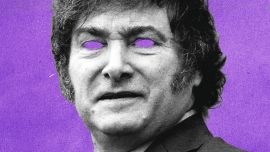
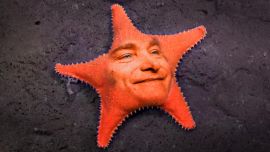




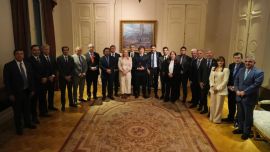
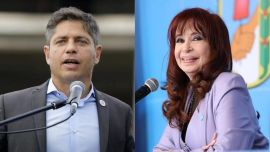

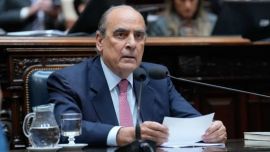
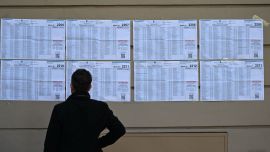
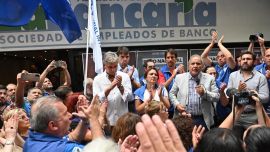


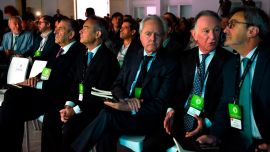
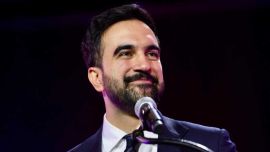
Comments